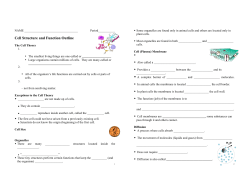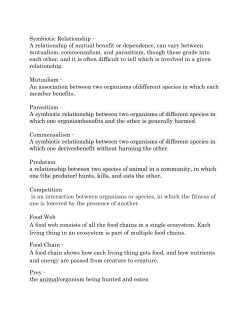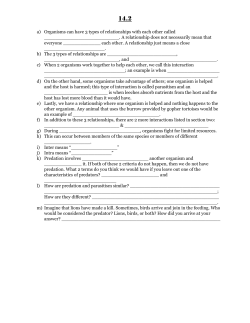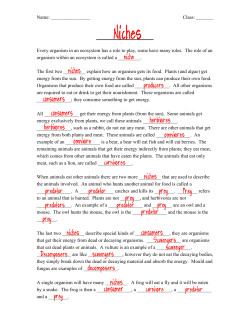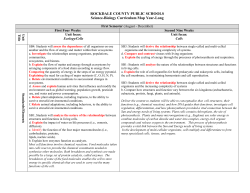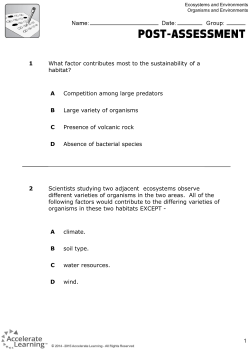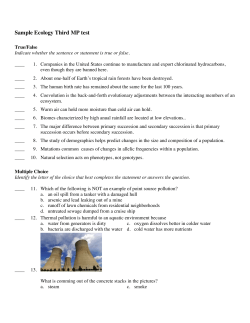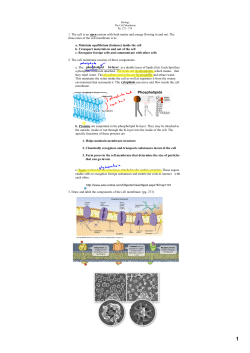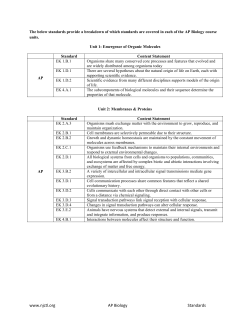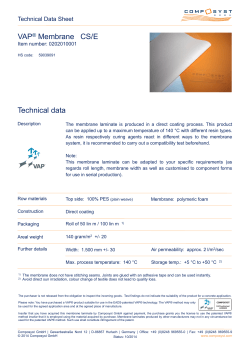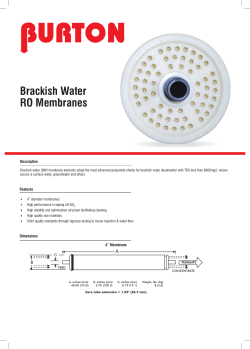
Why are Cells so Small? Date ______________ Per _____
Why are Cells so Small? Cell Size and Surface Area to Volume Ratio Name _______________________ Date ______________ Per _____ Learning Objectives: • LO 2.6: The student is able to use calculated surface-to-volume ratios to predict which cell(s) might eliminate wastes or procure nutrients faster by diffusion. • LO 2.13: The student is able to explain how internal membranes and organelles contribute to cell functions. Introduction: All organisms are composed of cells. The size and shape of a cell determines how well it can deliver nutrients to its interior. Since all cells and organisms depend upon the efficient delivery of gases, nutrients, and other important molecules, the relationship between a cell's surface area and its volume is an important regulating concept. Cells are limited in how large they can be. This is because the surface area and volume ratio does not stay the same as their size increases. Because of this, it is harder for a large cell to pass materials in and out of the membrane, and to move materials through the cell. In this lab, you will make cube shaped models to represent cells. The dimension along one side will be doubled with each model. You will then calculate the surface area, volume, and the ratio between the two. The surface area and volume are calculated as shown in the figure below: Questions: 1. List some of the things that cross a cell’s membrane. a. ________________________ b. ________________________ c. ________________________ 2. Why is it important that a cell have a large surface area relative to its volume? (In other words, a high surface area to volume ratio.) _________________________________________________________________________________ _________________________________________________________________________________ 3. Cut out and construct the four cell models. Fold and tape into cubes with the tabs to the inside. Measure and record the dimensions in the Table 1. Table 1. Cell Size Comparison Cube (cell) Dimensions (cm) 1 (smallest) ____ x ____ x ____ 2 3 4 (largest) Surface Area 2 (cm ) Volume 3 (cm ) Surface Area to Volume Ratio 4. Calculate the total surface areas, volumes, and surface area-to volume ratios for each cell model and record it in table 1. Show calculations in the table. 5. Which model has the largest surface area? _______________________________________________ 6. Which model has the largest volume? ___________________________________________________ 7. Which model has the largest ratio? _____________________________________________________ 8. What is happening to the surface area to volume ratio as the cell size increases? _________________________________________________________________________________ _________________________________________________________________________________ 9. To maintain life, and carry-out cellular functions, materials must be able to move into and out of the cell. Also, material needs to be able to move within the cell. What might be the advantage of having a large surface area? _________________________________________________________________________________ _________________________________________________________________________________ _________________________________________________________________________________ 10. Since transport of materials in and out of the cell can only happen at the cell’s surface, what problem does this pose for larger cells? _________________________________________________________________________________ _________________________________________________________________________________ _________________________________________________________________________________ 11. Do larger organisms have larger cells than smaller organisms, or more cells than smaller organisms? Explain. _________________________________________________________________________________ _________________________________________________________________________________ _________________________________________________________________________________ 12. What is the advantage of having folded membrane surrounding the cell (i.e. plasma membrane), or within the cytoplasm (i.e. endoplasmic reticulum) or within organelles (i.e. chloroplast)? _________________________________________________________________________________ _________________________________________________________________________________ _________________________________________________________________________________ _________________________________________________________________________________ Haut, J. (2012). Modified from “Limits to Size-Why are Cells so Small?” Haut, J. (2012). Modified from “Limits to Size-Why are Cells so Small?” Haut, J. (2012). Modified from “Limits to Size-Why are Cells so Small?”
© Copyright 2025
